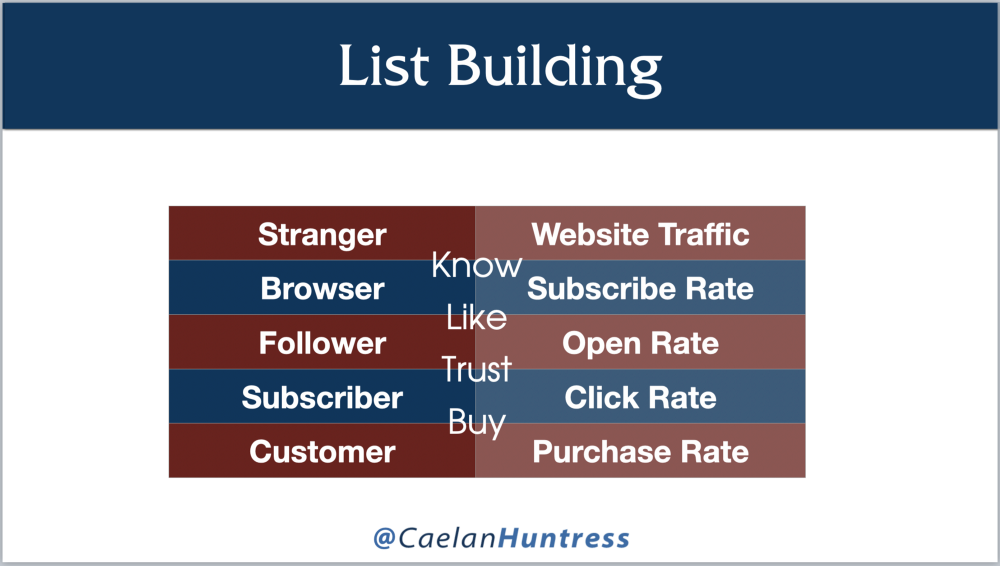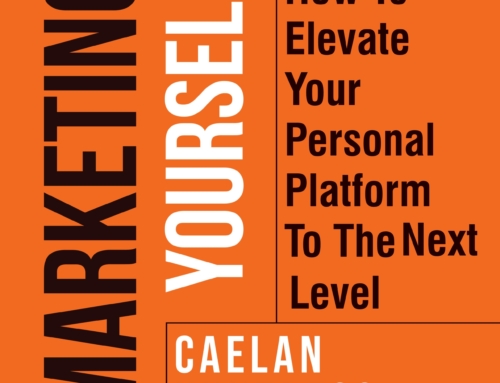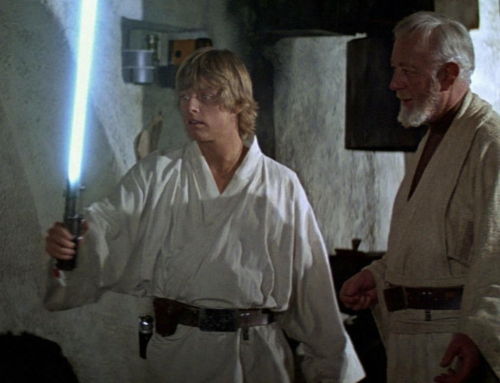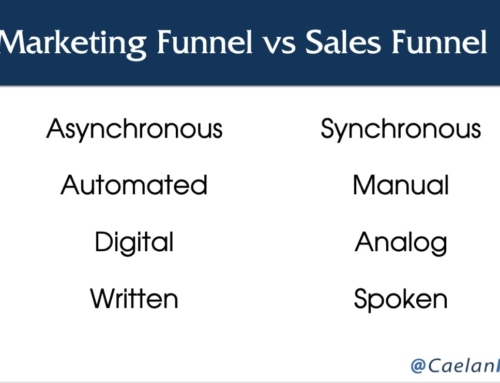Track Your Activity And Double Your Conversion Ratios

Photo by SunnyGraph on iStock
Many years ago, I was a car insurance salesman, and I was very unenthusiastic about what I was selling. I don’t like cars very much. They just get me from place to place.
Lots of my customers thought about their car insurance the same way. They don’t really like insurance, they just know they need to have it. Setting up or changing car insurance is treated as an irritating chore.
How can you sell something that you don’t care about, to people who don’t care about it? Well, I found a way to succeed as an insurance salesman with a funny email newsletter.
Every week, I sent my list a weekly newsletter with the details of a ridiculous hypothetical situation. The subject line of every newsletter started with, “Oh, NO!” and then described the risk of some outlandish event. Some of my most popular issues were: “Oh, NO! I’ve fallen from an AIRPLANE with no parachute!” and “Oh, NO! I have to win a fight with an OCTOPUS!” In each newsletter, I provided a humorous step-by-step solution for how to handle that week’s bizarre scenario.
Every issue also included a few recurring sections: Quote of the Week, This Day in History, and a Call-to-Action. The CTA at the end was always the same. At the bottom of every newsletter, I wrote, “If you need to talk to someone about your car insurance, please get in touch with me.”
Every single week, someone replied to my newsletter. Since my newsletter made them laugh, I was the one they contacted when they had to handle their irritating chore. I won sales awards, supported my family, and grew a career, because I built an email list.
Websites Are Brochures, Emails Are Sales Pitches
A brochure does not make a sale. A brochure gives basic information about your business and your offer. As a side-effect, it can lend you a layer of credibility. If you spend the time and the effort to make a good brochure (or a good website), your business looks legitimate to new people. This is known as ‘sales collateral.’
Sales collateral does not close a deal. Collateral can increase the likelihood that you can close a deal, but by itself, it doesn’t drive revenue.
If your website is your digital brochure, an email is the digital sales pitch. Emails have urgency, because they are time-specific. Emails make offers, and those offers are supported by your digital collateral.
If you can send someone to your website from an email, that’s the virtual equivalent of putting your brochure on their desk.
“If I have one regret as a business owner, it’s not focusing on building our email list earlier in the process.” — Joe Pullizi
Building an email list collects future clients into one place
Gaining subscribers to an email list is like filling seats in your own personal auditorium. Everyone who enters is willing to listen to you.
That’s a lot different than advertising, which is more like having a sideshow. “Step right up, come over here, and listen to me!” is how you try to carve out an audience from a crowd, by distracting them into paying attention to you.
With an email list, you have everyone’s attention already. People are sitting in your auditorium. Everyone who has subscribed is willing to pay attention to what you have to say. They don’t need to be convinced to listen to you. They know you, and if they haven’t unsubscribed yet, they like you, too. These are the first 2 steps in the Marketing Cycle: Know, Like, Trust, and Buy.
Subscribing to your email list is an act of trust. Your email subscribers are statistically more likely to become your customers than anyone else on the internet.
Emails Convert Better Than Any Online Activity
58% of adults check their email first thing in the morning, before doing anything else. 80% of decision makers prefer to get information about a product or service through a series of articles, rather than an advertisement. If you can set up a good email welcome series, you can educate your customer into doing business with you. That is a lot more powerful than an advertisement your prospect sees (once) and forgets.
If you want proof that email is a good investment, here is a truly startling statistic: For every $1 spent on email, according to Campaign Monitor, there is an average of a $44 return on investment.
The size and activity of your email list is a practical measurement of your marketing effectiveness. Building your email list expands your audience, and provides you with a base of customers to whom you can sell.
There is a simple progression that people go through, from stranger to customer: first they know you, then they browse your collateral. Some of them like you, based on what they see. Those people become followers. The ones that trust you become subscribers. And then, when they buy from you, they become a customer.

Measure the Conversion Ratios
There are 4 active choices that people take, as they go through this progression. Each of these active choices can be measured as a percentage rate with a simple calculation. The conversion ratios in the formulas below represent a number that you can measure over a specific period of time — monthly, daily, yearly, or per campaign.
- How often does website traffic subscribe to your newsletter? That’s your first metric: (Website Traffic) / (Email Subscribers) = Subscribe Rate
- How often do those email subscribers open your email? That’s your second metric: (Total Subscribers) / (Email Opens) = Open Rate
- How often do those email subscribers click on an email?. That is your third metric: (Total Subscribers) / (Email Clicks) = Click Rate
- Finally, out of everyone who clicked on your email, how many of them made a purchase, booked a call, or completed the goal of the page? Your fourth metric is: (Email Clicks) / (Purchases) = Conversion Rate
You can use this spreadsheet to start collecting and analysing this data.
If you have a subscription rate of 10%, that means that with website traffic of 4000 people, you could expect 400 to subscribe to your email newsletter. After ten months, you would have a list of 4000 subscribers. To keep the numbers simple, let’s say you have an open rate of 10%. That means that 400 people on your list of 4000 open it.
If you make an offer, and 10% of those readers click through at a rate of 1% of the list size, that means 40 people see your offer. If 10% of those people buy, then with a list size of 4000 people you have a can expect to make four sales for one email.
These numbers and ratios will be different for your business and your audience. After you start tracking the data of your email machine, you can start pulling the levers.
Double Your Ratios To Double Results
Once you know your conversion ratios — from stranger to browser, from follower to subscriber, from subscriber to customer — you can double any conversion ratio to double your results.
If you double your click-through rate, for example, and all other numbers stay constant, you will double your revenue. On the other hand, if you double your website traffic instead, or your opt-in rate, the end result will still double. (Assuming all the other conversion ratios stay constant, of course.)
Growing a list of customers is an advantage that compounds over time. Compound interest is more effective over longer periods of time. The sooner you start, the sooner you can start seeing dramatic results.
“Every person I’ve talked to who has an email list now, always says ‘I wish I would have started sooner.’” — Noah Kagan, founder of App Sumo
Basics of Email List Building
-
- Make a valuable lead magnet (related: read Solve The Smallest Possible Problem With A Lead Magnet)
- Offer that lead magnet to targeted audiences, in exchange for subscribing to your newsletter
- Send an automated welcome series that showcases the successes of your customers through case studies (related: read How to Welcome New Subscribers With an Email Onboarding Series)
Make regular offers to your list
Kevin Kelley famously talked about 1000 true fans. He said that if you have 1000 true fans that will buy whatever you’re selling, you can create your own business and make a living from your audience. The method you use to communicate your offers to that audience is not your website, your business card, or your brochure. It is through email that you can sell.
This article is an excerpt from my book, ‘Marketing Yourself.’ You can read the whole book here.





Leave A Comment